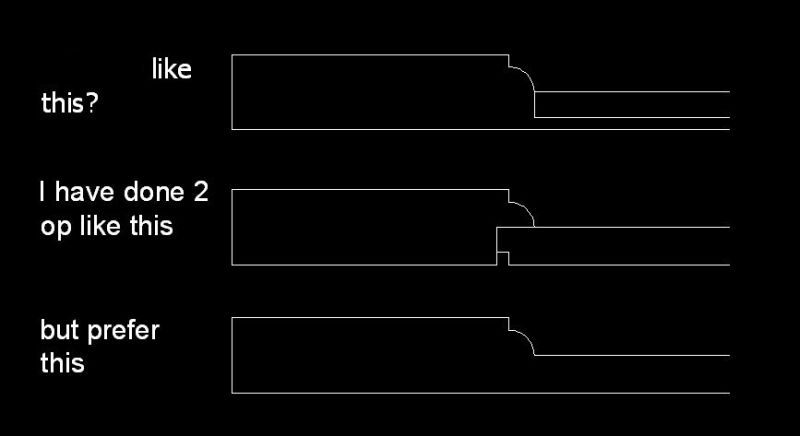Hi Guys,
For not having experience with CNC before, should I be looking at any aggregate applications such as for the "C" axis to mill curved pieces or maybe some occasional edge work? We are looking at getting a typical 3 axis machine - is it a mistake to purchase a machine that couldn't be outfitted with that 4th axis? Our application is nested based custom residential cabinetry. I don't want to limit ourselves but at the same time am not sure what doors of opportunity lie ahead. I also do not want to overspend. Do you guys use aggregates? Are they helpful? What kind of applications are you using them for? I am a sponge right now just soaking in whatever I can! Thanks!
From contributor DO
Id go for the C axis its very usefull and its cheaper to have the machine built with it rather than retro fit it at your shop. We do a lot of off 90 drilling where our drill unit can only drill X or Y. Also in the custom world you can work on 5 sides of a part with good software. We Have 3 Northwood Routers and use Mastercam. Outside of 5 axis theres nothing the machines cant do. Mastercam can do anything. Ive used it to program 5 axis in other shops. Take your time do your homework and don't be cheap if you can. If you can visit anyone that has a machine you should. Im in north NJ.
From contributor De
I totally agree with DOM. We have saw aggs and drilling and routing aggs all are on the "C" axis and can do any angle. The cost of the software to get the 5th axis is more but if you really think you will have a need it is worth it. If you don't see the need with your own work you could be spending a bunch and never use it, which would be just a waste of money. On the other hand the old "Build it and they will come" sounds great but unless you really get out there and inform every one constantly they will also forget.
From contributor St
Thanks guys! All this info is very helpful.
From contributor Mi
I agree with the other guys. I use 3 aggregates extensively. Adjustable angle, dual 90, and moulder head aggregates are essential for our commercial and high end residential machining. Without the aggregates I would have to spend a lot of $'s for a 5 axis machine to handle the 20 percent of our work that requires additional axes work.
From contributor Ga
"Our application is nested based custom residential cabinetry."
I'm going to go against the grain here and say no....
I've worked for 15 years in this industry, with close to 10 using and/or programming standard 3 axis CNC's.....and I've never used a C Axis....not to say that I wouldn't have if I had one, but you can get by just fine without for your work.
I'm also just curious how many of you are using a C axis on a flat table router? It seems the only benefit to this may be a saw for miters?
If your mainstay was entrance doors or other Architectural millwork, then by all means C Axis on a Pod and Rail.
We purchased a Weeke flat table router this year. I looked into the C axis, but it would have increased the cost of the machine significantly, and I couldn't see the value for what we do.
From contributor Do
All of our machines are all flat table. Ive worked on weeke p&r and biesse 5axis and never want to again. They are not friendly to 3rd party Gcode producing softwares. Yes they work but posts are much more complicated and expensive. We have 40hp vacuum pumps on our machines. Its very easy to put pods on our tables. (the machine comes with them) for door edge work. The main routing reason for the aggregate for me is you can cut parts in a nest at any angle and maintain kerf +or- bevel and no waiting for or buying custom tooling. A regular 3/8 cutter in a tilting agg handles anything. I used to do only architectural ww now moved away from that and do industrial ww. We NEVER know whats coming but we can do it. My machines cut 100-200 sheets a day each. Everyday.
From contributor ri
With no idea of what kind of production your company does, I'm with Gary B. Now if you do several kitchens a week, order lots of high end carved parts from outside suppliers now, I would recommend differently. But just knowing that you are thinking about a CNC to do residential custom cabinetry is not enough data to advise on what you should buy for maybe work in the future.
From contributor Mi
I would not expect too many demo's at IWF for aggregates. Just the nature of the process. The machine manufacturers want to show fast, impressive cycles. As I mentioned earlier I have 3 aggregates which I use with a flat vacuum table equipped with a grid table for use with custom made fixtures, home made pods, or purchased pods. If you are budget centered, I might suggest equipping one out of the factory with the most flexibility for holding parts with fixtures and pods and getting the C axis. As you get comfortable with programming, aggregates can always be added. Only one came with my machine, but production required two more to be efficient, as some parts require more than one per cycle. If you are looking for specific examples, email me and I can attach pictures of what you are looking for.
From contributor Ga
I guess my point is it's amazing how much work can be done with a 3 axis machine. Even the high end carvings that were mentioned earlier...Check out VCarve Pro for that stuff. Perhaps James McGrew will chime in here....He's much more experienced with 3 axis carving than I.
Again, if it was a point to point, and you needed to work edges such as miters with a saw, or mortises for modeez clips, etc. Then yes a C axis would be a HUGE benefit. But, for nesting, I'm still failing to see it.
Another thing worth noting, you mentioned you're in the business of residential cabinetry. Most Cabinet software programs will not program a C Axis anyways...I know microvellum will not, and I'm pretty sure CabinetVision will not either. In fact, the only "cabinet program" I know that would is TopSolid.
So, at that point you're down to hand programming in the brand's interface of choice, or another program such as Alphacam.....Fun...Fun....Fun.
From contributor mm
Couple examples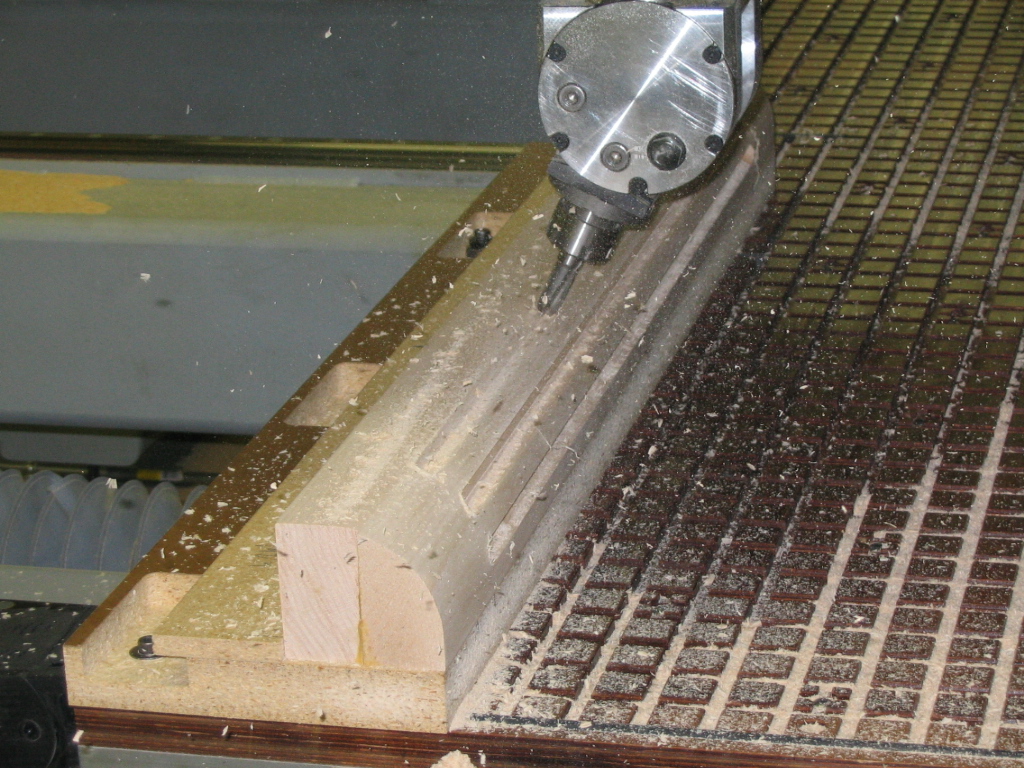
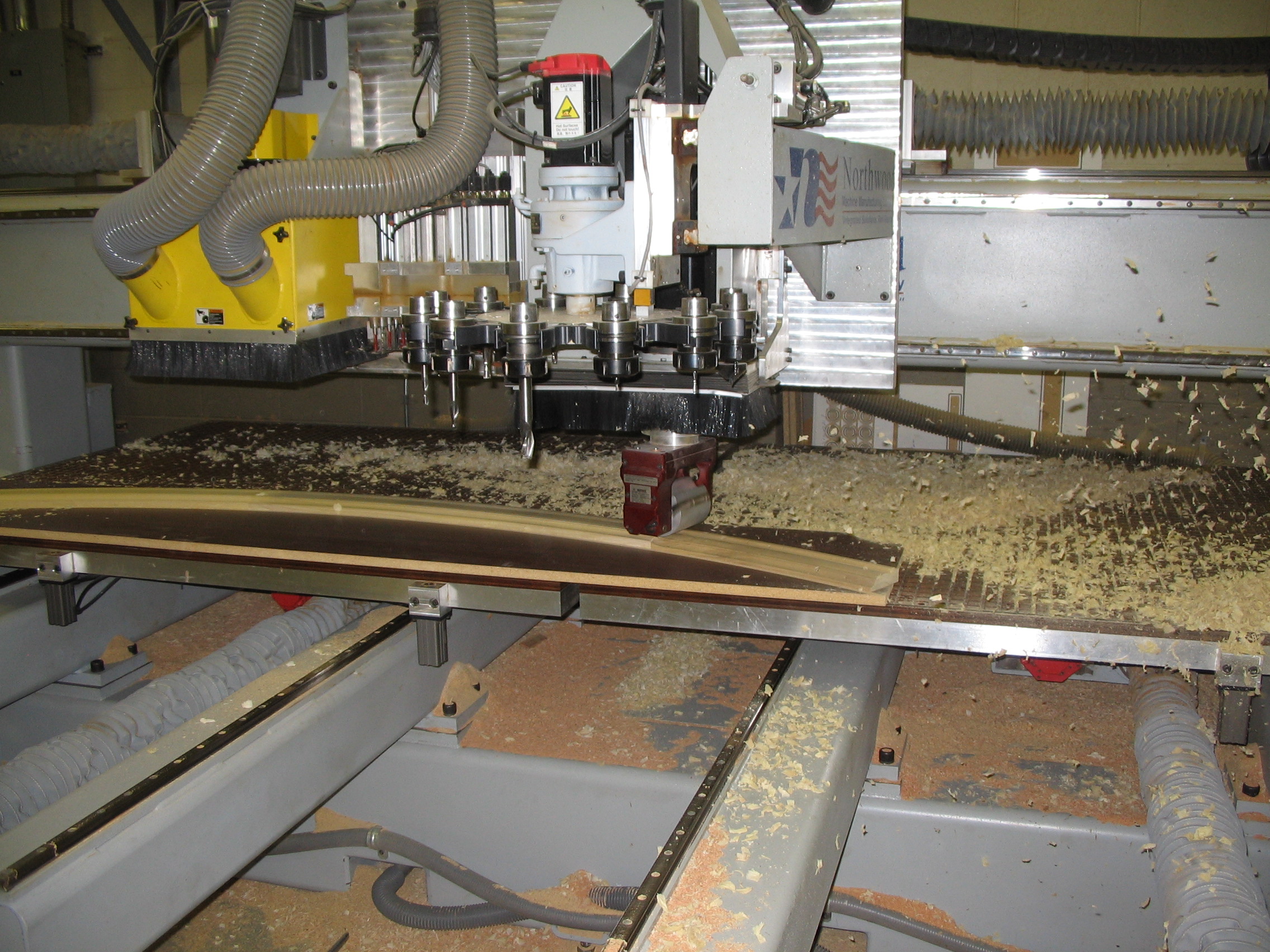
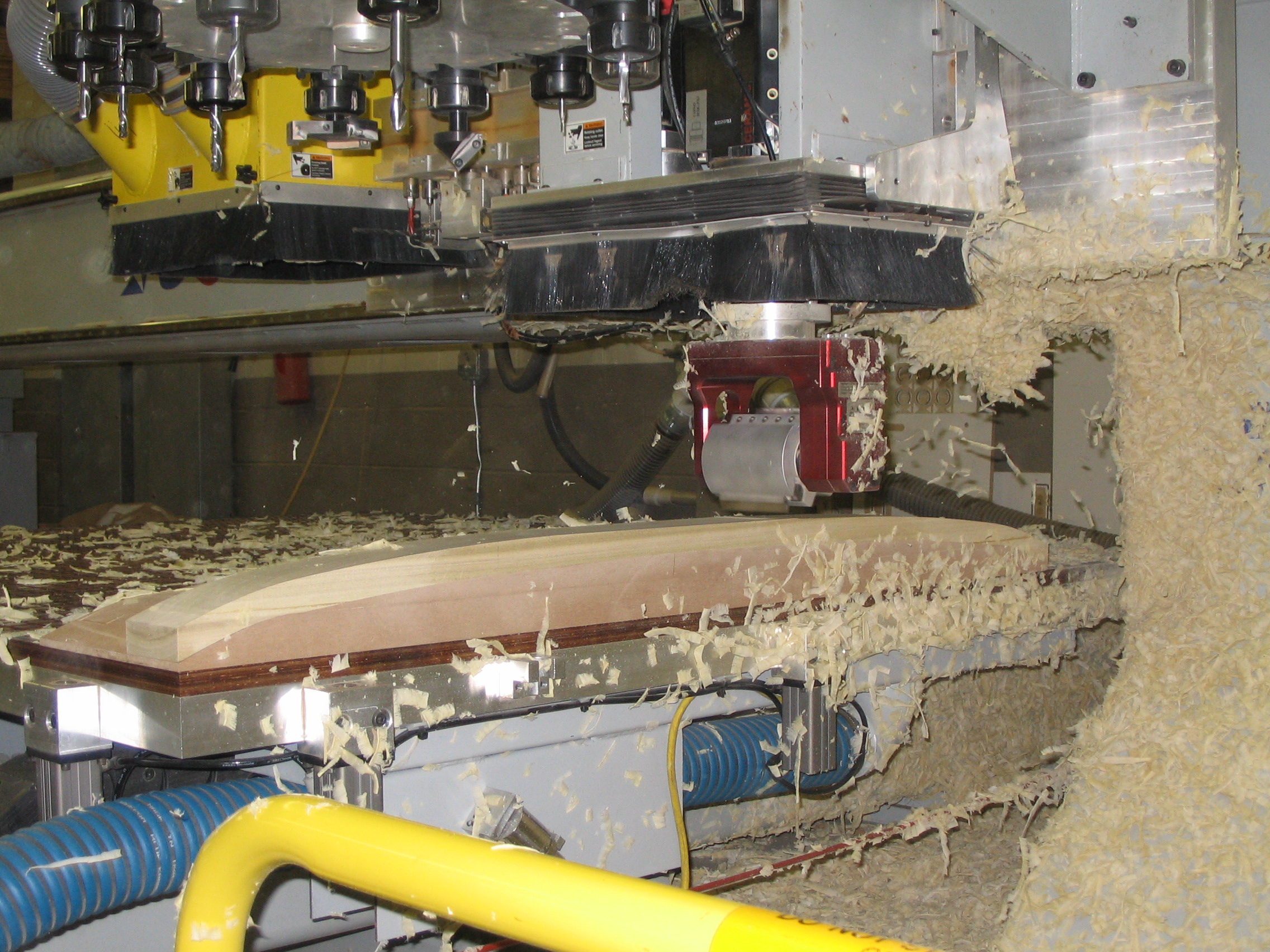
From contributor mm
couple more. Lots of uses where 3 axis doesn't cut it.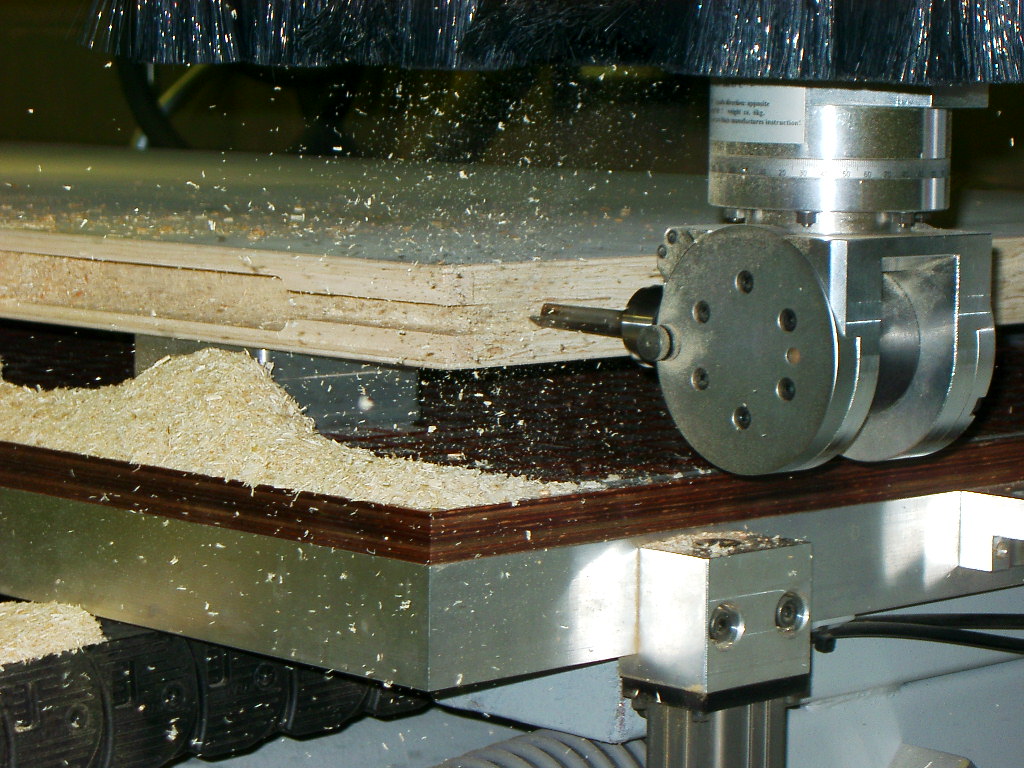
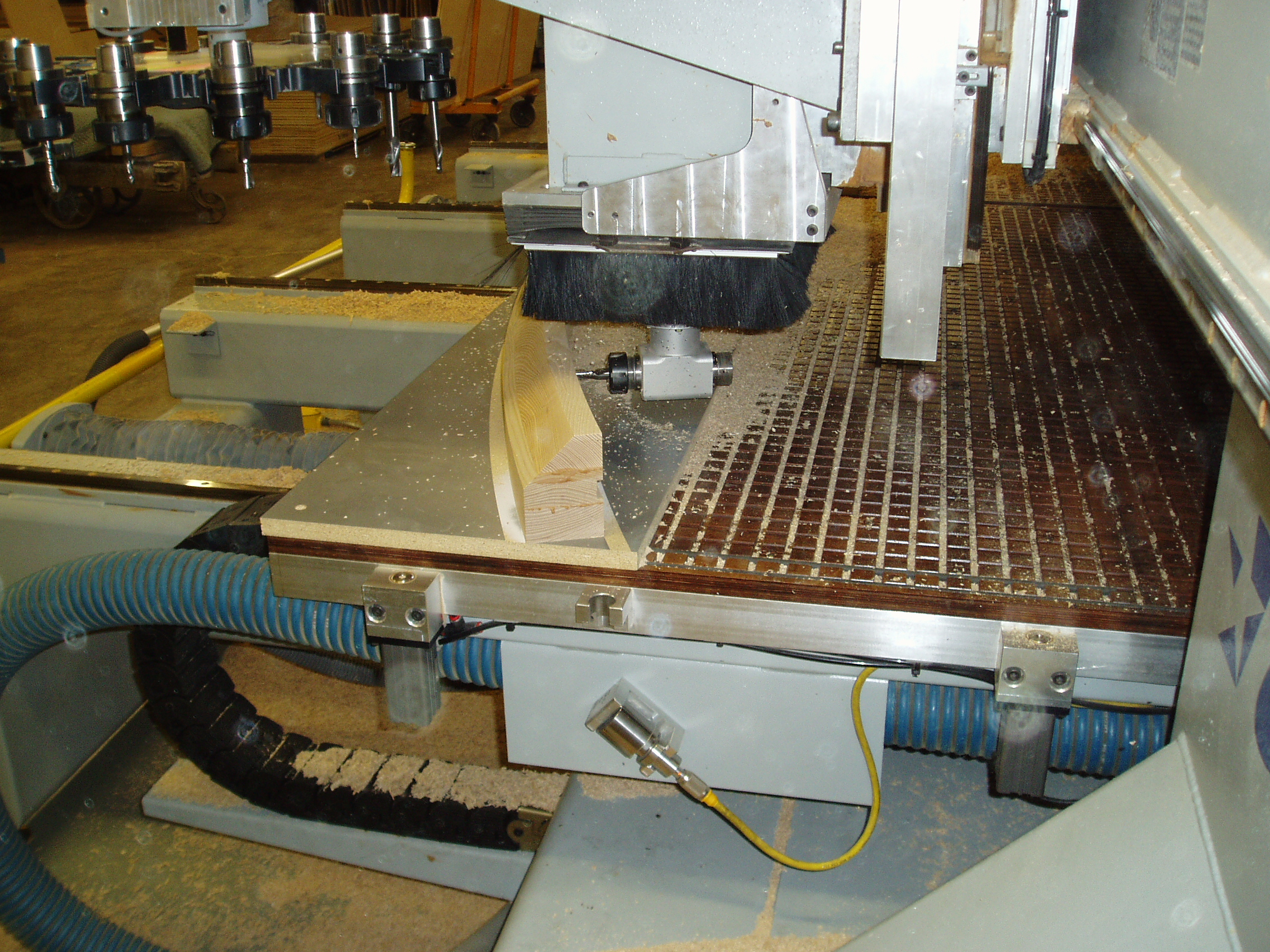
From contributor Ma
I agree with both points of view. I have no aggregates but wish I did. At the same time there has rarely been a situation I cannot handle with a simple 3 axis.
An aggregate will make it much faster to run a curved crown, but tracing it over with a small ball mill will do the job. Takes 2 hours to do what the aggregate could manage in 2 minutes, but costs zero in tooling compared with a couple of hundred for a knife to mount in a 6000 dollar head for the C axis.
I have done quarter round, half round and square 4 sided fluted columns as well, but it would have taken a lot less time with the aggregate.
Even lock and hinge mortising can be done with a little imagination and fixturing off the side of the router in many cases.
I would say get a machine set up to take the 4th axis, but hold off as long as you reasonably can before sinking the money, and more importantly the time to learn to program it.
From contributor Mi
Good points Mark. There is a lot of machining that can be accomplished with 3 axes machining given unlimited machine time and some ingenuity. That being said, when the cnc runs all day, every day, there just isn't enough hours to ball end mill production parts that need shaping. There are other parts, that just cannot be done without some sort of aggregate, period. So, if I put myself in the position of having limited funds and little exposure to the possibilities of what can be done on a cnc, I would buy the machine with a rotary axis, but hold off on the aggregates until I know what types will be the most beneficial to my production needs. That gives me plenty of time to learn to program, and discover which types of aggregates will work best for my company.
From contributor La
We are on our 3rd machine. If was to buy another flat table I'd get the C-axis but for a starter I'd be inclined to have the machine setup for it but not installed until It proved to be worth it. A lot depends on what kind of work you end up doing. What programs you use and just how much time is available to jury rig a 3 axis. We've got two aggregates on our pod & rail, used frequently but not for kitchen cabinets. A flat table can be easily setup for pods or jury rigged. The added cost will be in software, C-axis on the machine and the aggregates. All told quite a lot. Could easily exceed $35K.
From contributor St
Hi Guys,
I really appreciate all the info and sharing first hand - the pictures were really helpful as well! I feel like I just got a front row seat on an aspect of cnc that otherwise I would have learned the hard and maybe expensive way. I'm going into this feeling much more informed.
From contributor Mi
That is what we are here for. If you go to the show, talk to the guys at the Techniks and Benz booths. They will have them on hand to check out and will explain the differences in cycle times with oil or grease lubrication. Good luck with your final choice of machine and configuration.
From contributor Bo
I will have over 50 aggregates at the IWF.
Many of them are being used in live demos showing various applications.
Please stop by the BENZ booth 7544 and we can discuss your aggregate needs.
I can then direct you to a manufacturer who will most likely have that unit in their booth.
